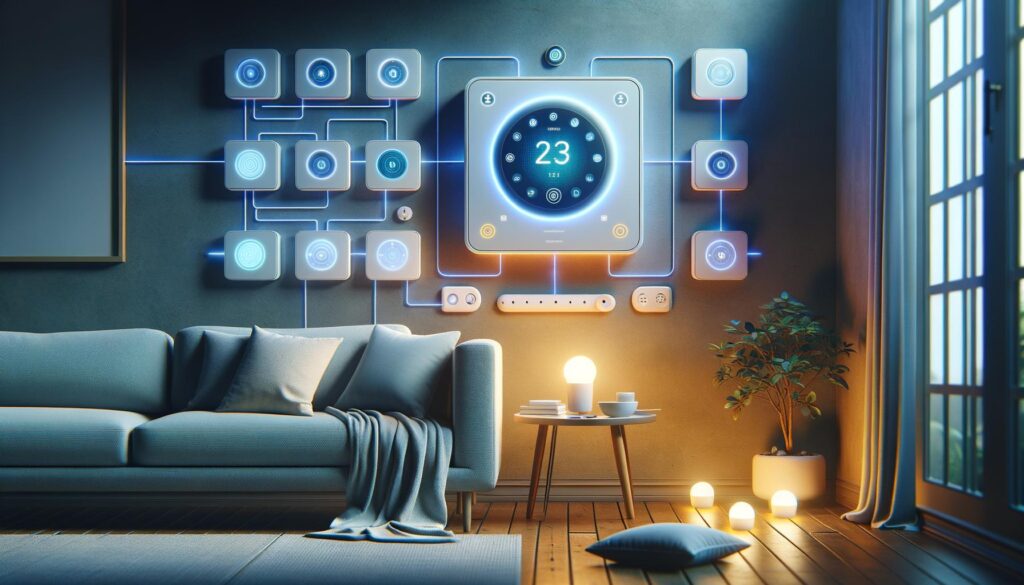Embrace the Future with Smart House Lighting Control Systems

Understanding Smart House Lighting Control Systems
Smart house lighting control systems represent a significant evolution in home automation. Unlike traditional lighting setups, these systems offer a range of advanced features that enhance user experience and offer considerable savings on utility bills. One of the standout features of these systems is the ability to control lighting remotely via smartphones or voice commands. This means that you can adjust your home’s lighting from virtually anywhere, providing unmatched convenience and flexibility.
At the heart of smart lighting systems is their ability to integrate seamlessly with various smart home ecosystems. They work flawlessly with smart hubs and other connected devices, allowing you to set routines and automate your lighting according to your daily schedule. For instance, you can have lights turn on gradually to wake you up gently in the morning or have them switch off automatically when you leave your home. These automations not only enhance comfort but also contribute to energy conservation.
Key Features and Benefits
The core appeal of smart lighting is its features that promote efficiency and ease of use. Some of the outstanding benefits include:
- Energy Savings: With smart lighting, you can significantly reduce your energy consumption. These systems allow for dimming and turning off lights when they’re not needed, which helps in cutting down electricity usage.
- Customization: Smart lighting offers unparalleled options for customization. You can set different lighting moods or scenes for various activities, whether it’s watching a movie, cooking, or hosting a dinner.
- Scalability: Smart systems are highly scalable and can easily be expanded as your needs grow. You can start with a few smart bulbs and gradually integrate more lights and smart devices into your ecosystem.
- Remote Access: The ability to control your home’s lighting remotely cannot be understated. This feature provides peace of mind by allowing you to monitor lighting activity and ensure your home is secure when you’re away.
Installation and Integration
Installing smart lighting does not require major overhauls to your existing electrical system. Many systems are designed to replace traditional switches and can be installed without professional help. The process often involves connecting bulbs via a smart hub or directly to your Wi-Fi network, depending on the system you choose.
For those with existing home automation setups, integration is straightforward. Most smart lighting systems are compatible with popular virtual assistants, making it easy to sync with your current devices. This seamless integration ensures that you can manage your entire smart home from a centralized application or through voice commands, enhancing overall convenience and user experience.
Security and Safety Considerations
Smart lighting control systems also contribute significantly to home security. With features such as automated lighting schedules, you can make it appear as if someone is home, even when you’re away, deterring potential intruders. Additionally, smart lighting can be linked to security systems, allowing for lights to turn on automatically if a security breach is detected.
Moreover, these systems often come with built-in safety features like alerts for unexpected activity, further enhancing your home’s security. Knowing that you can adjust your lighting to enhance visibility and deter would-be intruders adds an additional layer of safety to your property.
What to Consider When Choosing a Smart Lighting System
When selecting a smart lighting control system, several factors should guide your decision:
- Compatibility: Ensure that the system you choose is compatible with other smart devices and frameworks in your home.
- Ease of Use: Look for systems that offer user-friendly apps and straightforward setup processes.
- Cost: Consider the initial cost against the long-term savings on energy bills. While some systems might have a higher upfront cost, their energy efficiency is a cost-effective choice over time.
- Features: Evaluate the range of features offered. Whether you prioritize automation for security, functionality, or energy savings, make sure the system aligns with your specific needs.
Conclusion: A Bright Future with Smart Lighting
Smart house lighting control systems are transforming how we interact with our home environments, offering a blend of convenience, security, and efficiency. Embracing this technology today means stepping into a future of enhanced home living, where your lighting system works seamlessly with your lifestyle and preferences. For anyone looking to modernize their home, smart lighting offers a reliable, innovative solution.
